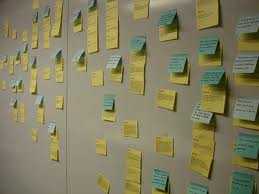While brainstorming is a widely accepted technique in the business world, it’s absolutely crucial when using Lean Six Sigma. Project team leaders with expertise in how to apply Lean Six Sigma tools to brainstorming are a step ahead of their contemporaries, and will experience more success in solving operational problems, improving efficiency, cutting waste, and eliminating costly errors.
Brainstorming is a creative problem-solving technique that involves generating a large number of ideas or solutions to a specific question, problem, or challenge. It typically happens on project teams – the more diverse the team, the better the result. A variety of opinions can lead to more creative and effective solutions.
The primary goal of brainstorming is to encourage free thinking and to create an open and non-judgmental environment that stimulates creativity and innovation. Brainstorming should be used when there is a broad range of options that are desired, when creative items are desired, or when participation of an entire team is desired.
When brainstorming, there is no room for criticism as it stifles participation. There’s no need to evaluate every idea presented, as that can be accomplished later. Teams shouldn’t slow things down for lengthy discussions on a single idea.
It’s also important to keep in mind that there are no “dumb” ideas. Even if someone suggests an idea jokingly, add it to the list. All ideas are recorded. Also combining (known as “piggy-backing”) and expanding on other ideas is encouraged.
Lean Six Sigma Tools Useful in Brainstorming
A number of Lean Six Sigma tools can prove useful when brainstorming. One of the best is the affinity diagram, created by Japanese ethnographer Jiro Kawakita specifically to solicit, record and discuss ideas that can improve efficiencies and solve operational problems. The affinity diagram also encourages teams to focus on the root causes of challenges.
Toward that end, a Cause-Effect Diagram (also known as a Fishbone Diagram) is designed to help groups focus on finding root causes of issues, rather than waste time on symptoms. The idea is to create a chart by starting with the effect on the left side, then listing potential causes, then sub-causes, then sub-causes of sub-causes, until reaching the root of the issue. (Using the Five Whys can help teams quickly find sub-causes).
A Value Stream Map can also help teams isolate the different sections of a process, identifying those that are not finding value to the customer. The map can also provide a quick overview of the entire process so teams can quickly refer to specific parts of a process.
Common Brainstorming Guidelines
Project teams start by defining the problem or question, clearly stating the issue that the team will address. Team leaders establish ground rules. Those typically include encouraging all participants to contribute ideas, avoiding criticism or judgment of ideas during the session, and building upon others’ suggestions.
Team members are encouraged to throw out as many ideas as possible, regardless of how feasible or practical they may seem. Quantity is prioritized over quality at this stage. They also can build off each other’s ideas, sparking new thoughts and combinations. Tangential or seemingly unrelated ideas are also welcome, as they can lead to novel solutions.
After the brainstorming session, ideas are reviewed and categorized based on feasibility and potential impact. The team then selects the most promising ideas, further developing and refining them.
Brainstorming is widely used in various settings, including businesses, academic environments, creative industries, and problem-solving scenarios. It fosters collaboration and encourages out-of-the-box thinking, making it a valuable tool for generating innovative solutions to complex challenges.



